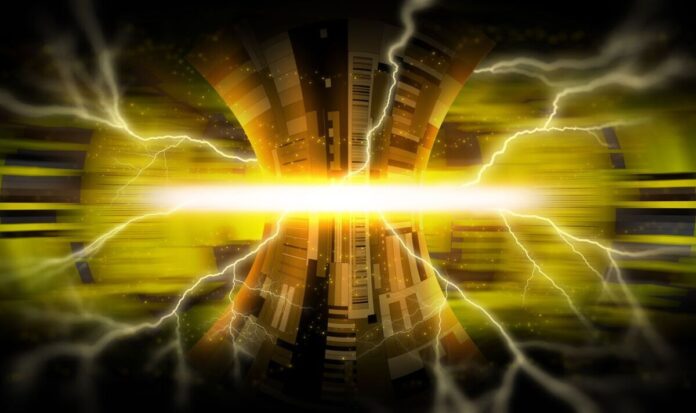Nuclear fusion needs an energy neutral “ignition” (Image: Getty) Scientists working for the US government ahve acheived net energy gain in a fusion reactor for the second time. It is a moment that could provide a boost of optimism about the dream of limitless, no-carbon power. Since the 1950s scientists have worked to recreate the fusion reaction that powers the sun, but until December, it had never been done. No group have ever been able to produce more energy than a reaction consumes, reports the Financial Times . This condition is known as “ignition”. But researchers at the federal Lawrence Livermore National Laboratory in California, who achieved “ignition” for the first time last year, have managed to recreate the breakthrough. However, this time they managed to produce an even higher energy output. Lawrence Livermore National Laboratory (Image: Getty) The lab confirmed energy gain had been achieves at its laser facility. It said the full analysis of the result, which was produced on July 30, is still underway. A spokesman said: ‘Since demonstrating fusion ignition for the first time at the National Ignition Facility in December 2022, we have continued to perform experiments to study this exciting new scientific regime. In an experiment conducted on July 30, we repeated ignition at NIF. ‘As is our standard practice, we plan on reporting those results at upcoming scientific conferences and in peer-reviewed publications.’ Fusion is achieved by heating up two hydrogen isotopes – often deuterium and tritium – to temperatures so high that their atomic nuclei fuse together. This in turn releases helium and large amounts of energy, which are in the form of neutrons. The laser shot at a hydrogen target (Image: Getty) While scientists generally believe the idea of a fusion power station is decades away, the technology’s potential is massive. This is because fusion reactions produce zero carbon, no radioactive waste, and could power a house for almost a century with a small cup of hydrogen. The most widely looked at approach for fusion is known as magnetic confinement. This uses massive magnets to hold the fuel in place while it is heated to temperatures exceeding those found on the sun. The NIF however uses a different process. This is known as inertial confinement and uses the world’s largest laser, which is then fired at a tiny capsule to trigger and implosion. US energy secretary Jennifer Granholm called ignition “one of the most impressive science feats of the 21st century” in December. The experience produced around 3.15 megajoules, which is roughly 150% of the 2.05MJ powering the laser. Two of the people with the knowledge of the July preliminary results estimate it had an energy output exceeding 3.5MJ. That would be enough power to run a household iron for an hour. Achieving this net energy gain has been long considered a crucial step towards commercial fusion power stations. However until they can be realised, there are several major hurdles to overcome. The lab test records energy gain merely as that needed to power the lasers. Whereas the energy needed to tbe pull off the grid entirely to power the system is much higher. Scientists estimate that commercial fusion will require reactions that generate between 30 and 100 times the energy in the lasers. The NIF can also make a maximum of one shot a day, whereas an internal confinement power plant would need to complete several each second. However, the improved result at NIF, coming ‘only eight months’ after the initial breakthrough, was a further sign that the pace of progress was increasing, said one of the people with knowledge of the results.


